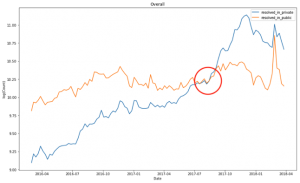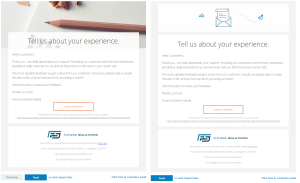Marketing is a niche that gets harder every day. Less and less people trust any kinds of ads, be that an old-school billboard or a highly-targeted Facebook ad. With the ever-growing plethora of websites and only 10 first positions in Google, SEO is becoming reserved for the large highly influential companies. With social media trying to become more “private” and the content growing as well, organic social traffic is a pain to get. But keep calm – some tactics are still on the flow. Influencer marketing is one of those tactics.
Influencer marketing is one of the fastest growing channels for brands. It beats organic search, paid search, and even the good old email marketing. 22% of marketers say influencer marketing is the most cost-effective method of obtaining new customers. On average, businesses earn $ 6.50 for each dollar spent on influencers.
Below you’ll find an infographic of tools made specifically for influencer marketing. However, to get the best possible results, you’ve got to know at least the basics of influencers marketing first. So, let’s start with the influencers’ types.
- Celebrity influencers
It doesn’t matter whether the influencer is a strictly social media celebrity or someone who has been famous long before people knew the word “Instagram”. If they have millions and millions of followers on social media accounts and their engagement rate is through the roof, it’s most likely they work with large enterprise and advertise almost anything. While you surely wouldn’t follow a famous makeup artist in their car choice, many people would. That’s the kind of influence that stars tend to have on their audience.
- Macro-influencers
Macro-influencers are online influencers with hundreds thousands of followers. Unlike celebrities, they usually advertise products within their expertise. The popular niches include video gaming, makeup, clothing, sports, food, health, and travel. They charge a lot of their services and the results are likely to be positive, as their audience is large and targeted.
- Middle-power influencers
Influencers with the following between 10,000 and 250,000 currently dominate the market. They are also focused on their niche, however, the choice of industries is much bigger in this category. The prices differ significantly as well.
- Micro-influencers
Micro-influencers might seem insignificant, but that isn’t true. They are a great choice for a marketing campaign, especially if you’re on a budget. First, they exist in every niche. If you’re selling stuffed animals with built-in audiobooks, the Internet will have a micro-influencer for that. Second, their audience is usually very engaged and trusting. Micro-influencers aren’t “sell-outs” yet, so people tend to see them more as friends than as anything else. Third, the payment conditions can be very different. Micro-influencers can even talk about your product for free if they truly like it. That’s because they are interested in delivering new content and growing their audience.
How to approach the influencers?
Surely, before approaching influencers, you’ve got to find the ones that would suit your brand best. If you scroll down, you’ll see the infographics with the tools that find relevant influencers painlessly. But what do you do after you have your list of possible partners?
- Find out more about each influencer from your list. Perhaps, you have something in common that could simplify the outreach. Perhaps, someone is not actually right for your brand after all.
- Build a connection. Sometimes, paying good money and having a decent product will be more than enough to make an influencer work with you. Other times, you’ll have to remember that social media is just that – social. It requires people to be “friends” before doing favors for each other. So, do your best in terms of social media code of conduct: share the influencers’ content, comment on their blog, mention them in your own content. Chances are, they will feel obligated to return the favor when it’ll come to your brand and your product.
- Reach out. Finally, unavoidably, you’ll have to reach out with your proposal. Keep in mind, your email/message for each influencer should be personal. It has to be based on the research you’ve done on the influencer. This shouldn’t be too hard or too time-consuming since you won’t end up with the large list of influencers anyway. Your proposal should clearly describe your brand, your product, and your request. Don’t forget to outline what’s in it for the influencer.
After you’ve found your influencer, reached out to them, and carried out an influencer marketing campaign, don’t forget to measure the results. Some tools from the list below will help you with analytics as well with finding influencer. However, most tools below are geared towards finding the right social media influencers, which is the biggest and most pressing challenge according to a study by Econsultancy.
![7 of the Best Tools to Find Influencers on Social Media [Infographic] 7 of the Best Tools to Find Influencers on Social Media [Infographic]](https://www.onlinesalesguidetip.com/wp-content/uploads/2019/12/7-of-the-Best-Tools-to-Find-Influencers-on-Social-Media-Infographic-scaled.png)
Digital & Social Articles on Business 2 Community
(38)







